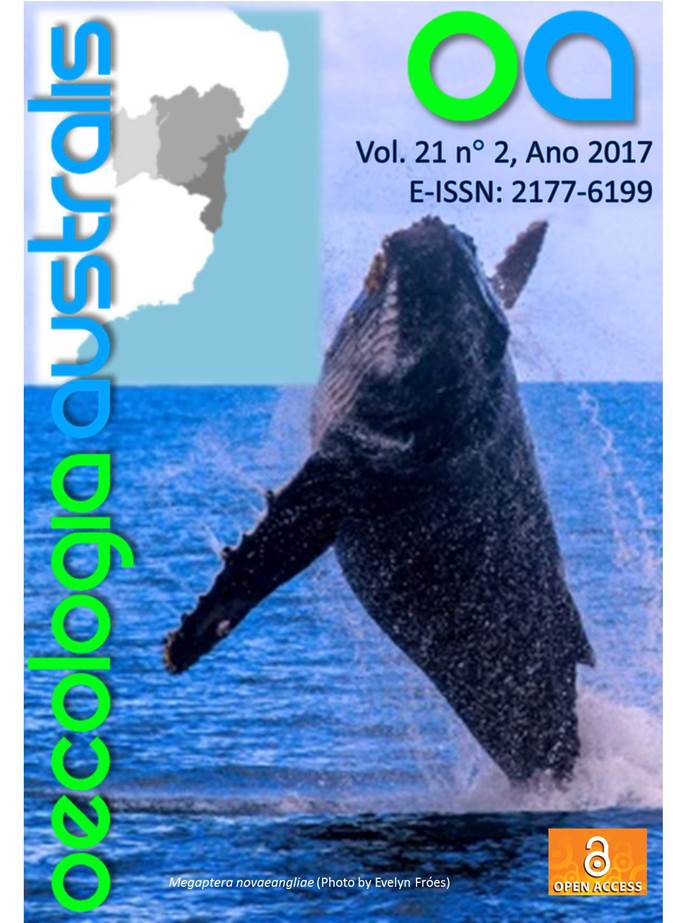THE EFFECTS OF ARTIFICIAL CRAB SPIDERS (THOMISIDAE: Misumenops spp.) ON Piper POLLINATOR BEHAVIOUR IN COSTA RICA: DIFFERENCES BETWEEN INSECT ORDERS
DOI:
https://doi.org/10.4257/oeco.2017.2102.11Keywords:
clay models, food webs, insect-plant interactions, plant fitnessAbstract
Communication drives ecosystem interactions, including the visual signals of plants used to attract pollinators. However, the effectiveness of flower color in attracting pollinators increases dishonest signalling by pollinator predators exploiting floral inflorescences as hunting niches. Negative pollinator associations with spiders on flowers may cause avoidance of specific plants, thus reducing plant fitness from decreased pollination, but this remains understudied. In this study, we used clay models to simulate crab spiders (Misumenops spp.) on Piper plants in a paired design (spider vs. no spider) on the same plant to further investigate the role of pollinator predators on pollinator behaviour. Using this design, we compared avoidance and visitation of Piper plants, identified pollinators to order (and to insect, if possible, such as the case with bees, wasps, and ants in Hymenoptera), and observed individual insect behaviour towards spiders. Piper pollinators were more likely to be aware of spider treatments vs. controls and were also 5.01 times as likely to avoid spider treatments (p < 0.001). Visitation on controls was also higher, but this was not found to be significant (p = 0.800). Overall, nine orders of pollinators were observed visiting Piper plants, with Hymenopterans, Dipterans, and Coleopterans found to be the dominant orders observed with differences in visitation and avoidance, using Poisson distributions in generalized linear model analyses. This study provides a framework for investigating non-consumptive effects of predators on plant fitness.Downloads
Download data is not yet available.
Downloads
Additional Files
Published
2017-08-10
Issue
Section
Short communication


